The Favorite Toy

A blog post by Director of Collections and Exhibits Joanna Church. To read more posts by Joanna click HERE.
This past week, my internet browser – which perhaps knows me better than I’d like it to – suggested this article in the Guardian about childhood toys. The browser was right as this is, in fact, right up my alley; not only is it about things, but it addresses through a small lens my favorite topic: what things we save, why we save them, and what they mean to us (both personally, and the broader ‘us’ as readers and museum visitors) when we encounter them again. Full disclosure, right off the bat: yes, the article got me teary, and yes, I do still have my baby blanket.
Naturally, after reading the article I turned to the JMM collections to see how they might reflect this story of special childhood artifacts, whether saved or remembered. Disappointingly, but perhaps unsurprisingly, we don’t have much. The Favorite childhood teddy bear, stuffed animal, doll, or blanket tends to either be lost/disposed of, or loved to pieces; when it does survive, it’s not necessarily something that is thought to be of interest to a museum, being so very personal and/or in bad condition. Household and decorative pieces, art, clothing, ceremonial items – handed down through generations, brought from the old country – those are offered to us; but one-eyed, grungy old Teddy? Why would the museum want that? (Pro tip: try us! You might be surprised!)
We do have a few actual toys of this sort in the collection; here, for example, is a doll owned by Carrie Mann Halle (1873-1944). Carrie, and perhaps her sons and grandchildren, put this doll – name unknown – to the test of what looks like years of love; I suspect she was carried around by her left foot (now partly detached) for much of her active life.
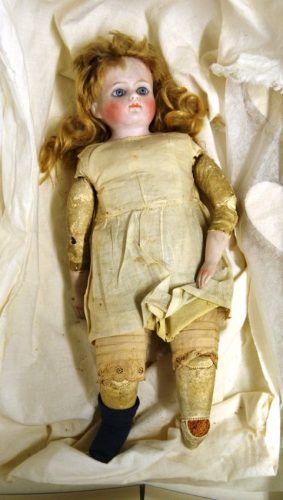
Without the toys themselves, we have to look for other sources. Baby books, which encourage parents to record every possible facet of their darling’s existence, can be a useful tool… provided, of course, that those parents did in fact commit the requested information to paper. A few of the books in our collection tell us Baby’s First Toy, including this one:
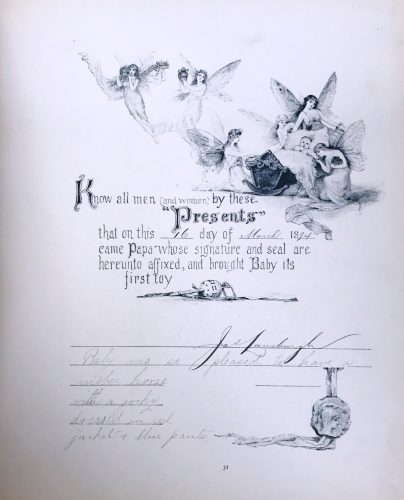
Of course, First Toy does not necessarily translate to Favorite Toy. (If there were a way to predict which toy will assume that role, many parents’ lives would be much easier!) Photos can help us get closer to the toys that were actually played with and loved; though even then, there are occasional pitfalls. In the two photos below, for example, I suspect the toys may have been studio props.
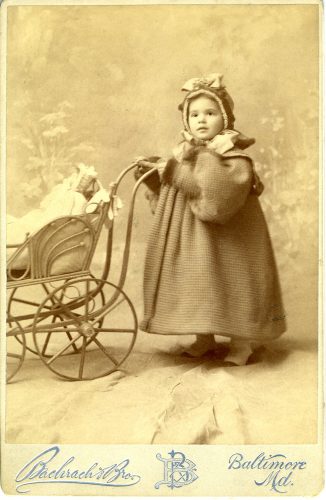
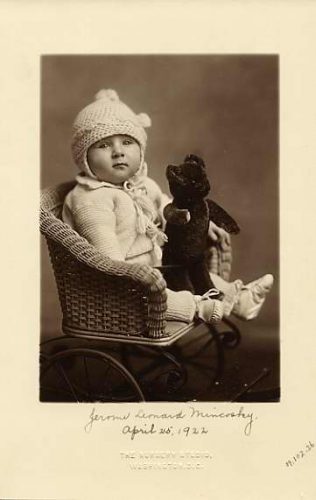
In the family portrait below, it’s possible that the toy held by the youngest family member is yet another prop… but I find myself more inclined to think that it might be her own doll, having traveled with her on the family’s journey across Russia en route to the US.
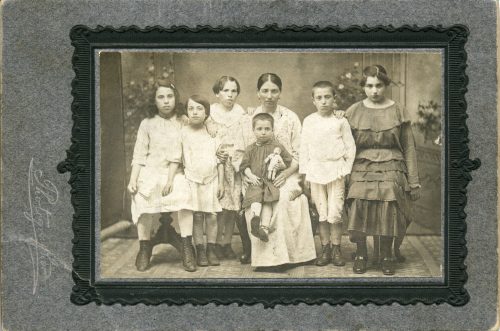
Still, snapshots and candid photos are a better way to find the toys that were really used:
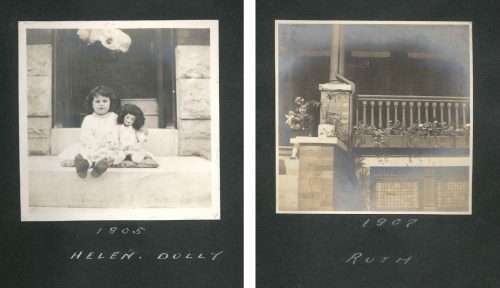
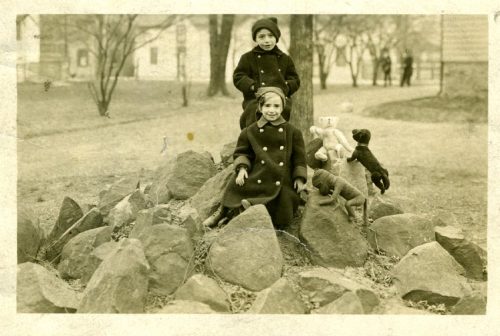
What we don’t have, to go with all these photos and archival records, are the personal stories: the memoir or interview or note on a photo that confirms that Dolly was treasured above all (or only for a week). In some cases, further digging and research may help us discover these stories. But as often happens, a certain amount of supposition must come into play, no pun intended, as we build the histories of Maryland’s Jewish community.
